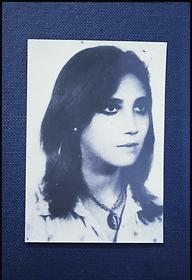Cases
Making the "disappeared" visible
In the "Dirty War" that took place between 1976 and 1983, Argentina's military regime committed massive human rights violations. Nearly 20,000 men, women and children were "disappeared" (los desaparecidos)—abducted, tortured, raped, and murdered—with no information provided on their whereabouts.
When the junta fell, the new civilian government invited forensic scientists from the American Association for the Advancement of Science to help investigate. Outside aid was critical—many Argentinean forensic professionals were implicated in the crimes of the junta, compromised by their association with the state, or poorly trained under a regime that discouraged investigation.
In 1984, anthropologist Clyde Snow recruited a group of Argentinean university students who lacked training in forensics, but were eager to learn. Together, they excavated hundreds of clandestine mass graves. This painstaking work led to the formation of the Equipo Argentino de Antropología Forense (Argentine Forensic Anthropology Team, or EAAF in the Spanish acronym), a nongovernmental organization dedicated to using forensic science to investigate human rights abuses.
"I'm not an advocate, I'm an expert. Unless you maintain…objectivity, you lose credibility.…and the best way is to let the bones speak for themselves."
—Clyde Snow, American forensic anthropologist
Bones as witnesses
In a landmark trial in 1985, forensic testimony helped convict six of nine former Argentinean military junta leaders for the deaths of the "disappeared." The forensic investigation focused on the exhumation of human remains at individual graves, using archaeological techniques and laboratory identification methods. The forensic volunteers, led by Clyde Snow, decided to present representative cases at the trial. One of the most dramatic was the case of Liliana Pereyra, a young woman who was abducted, tortured, raped, and murdered—after giving birth to a child whose identity and whereabouts are still unknown.
"Bones make great witnesses, they speak softly but they never forget and they never lie…."
—Clyde Snow, American forensic anthropologist
